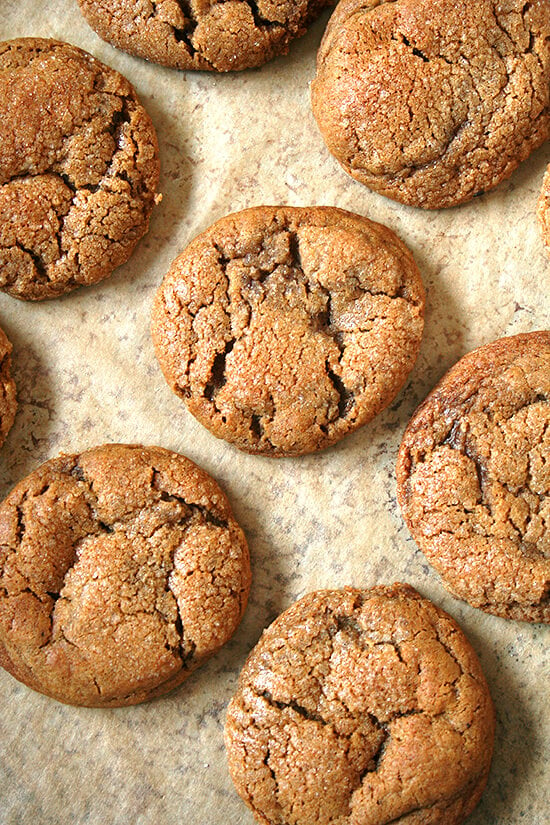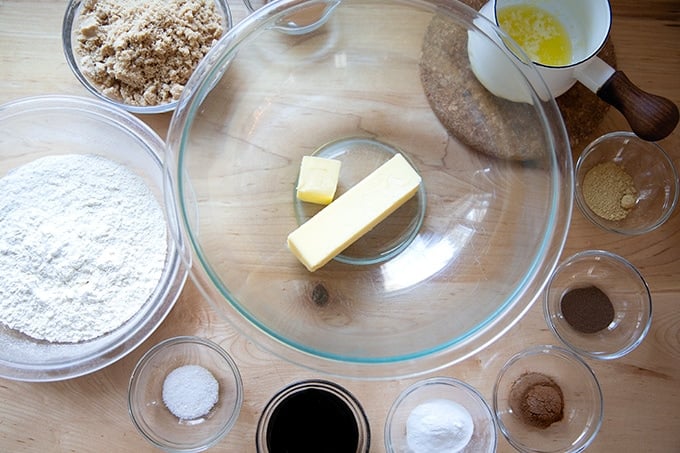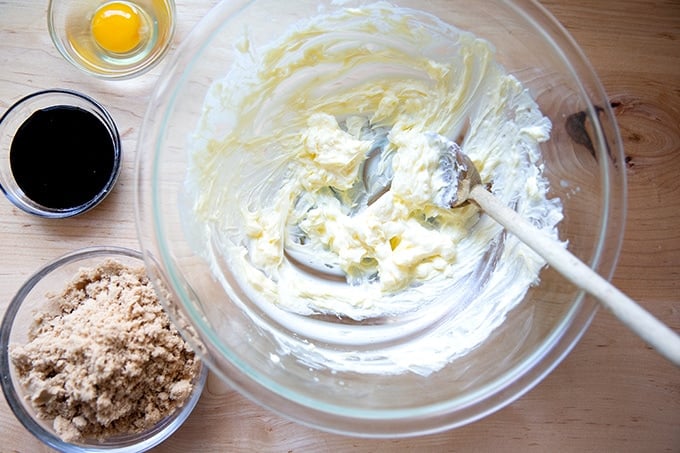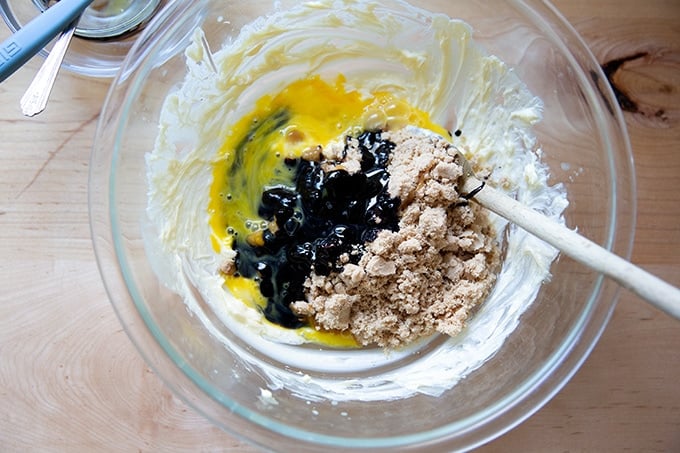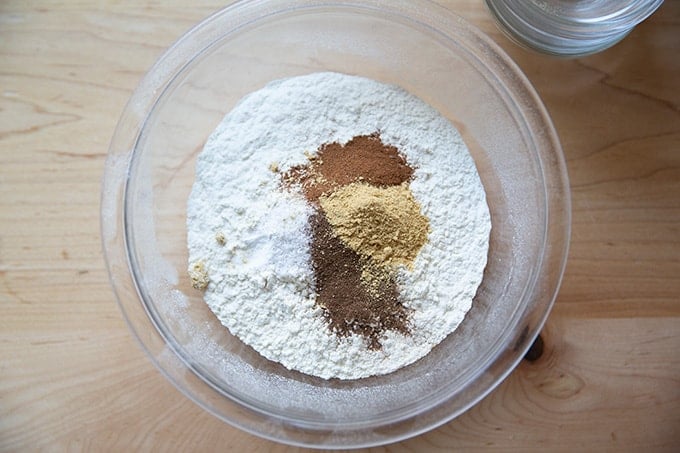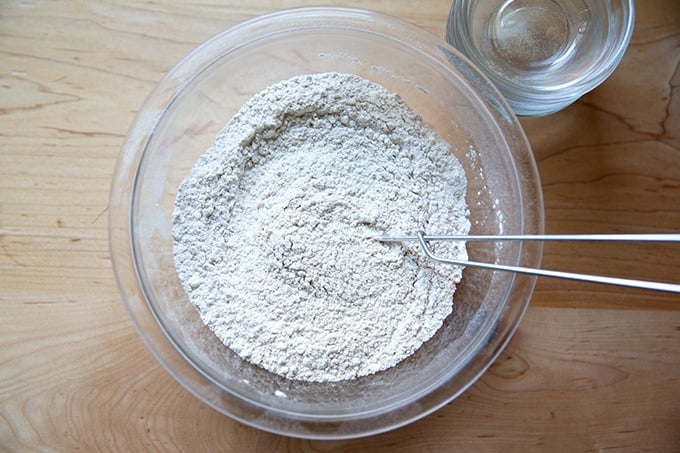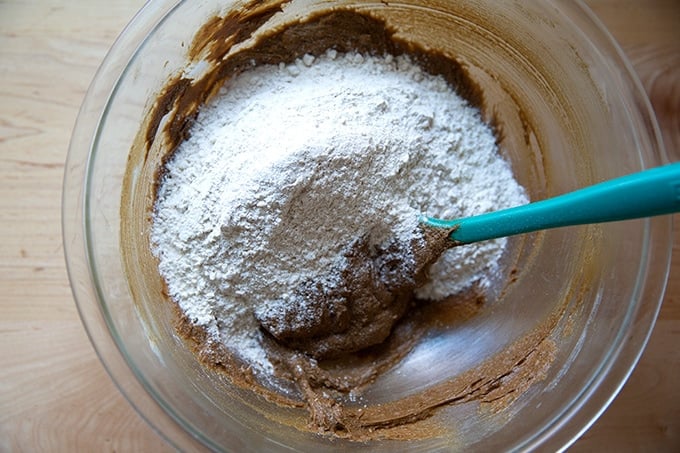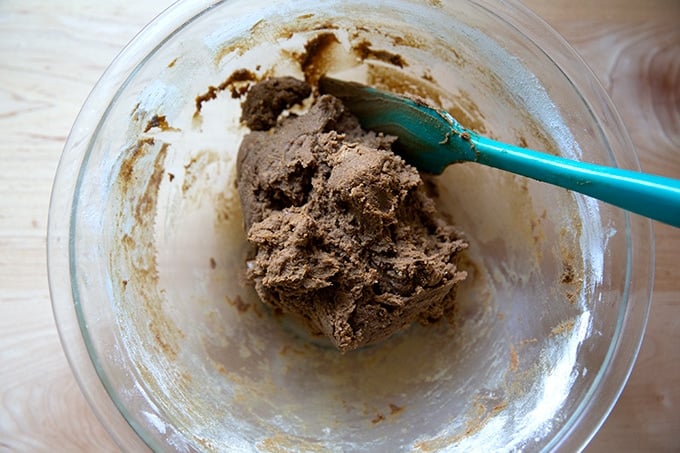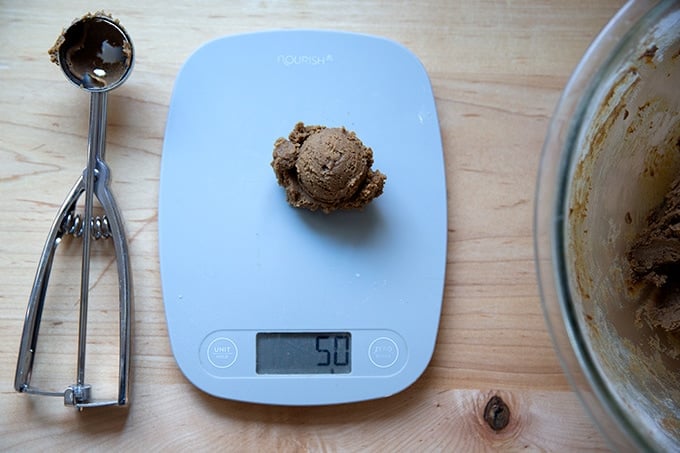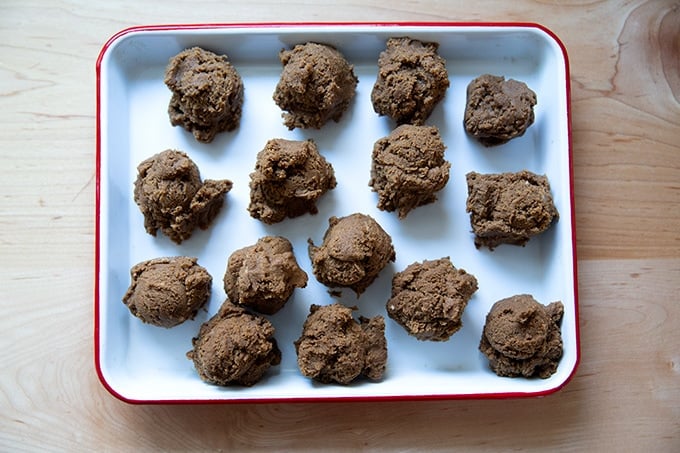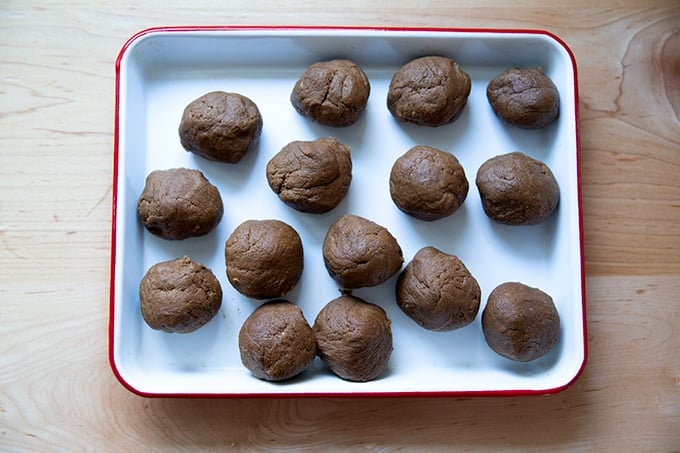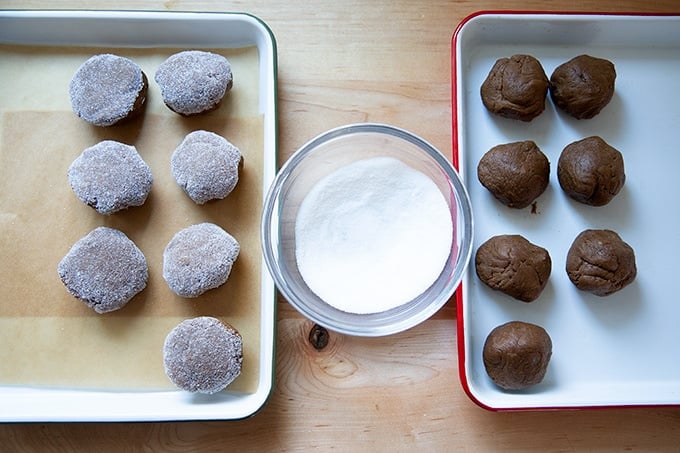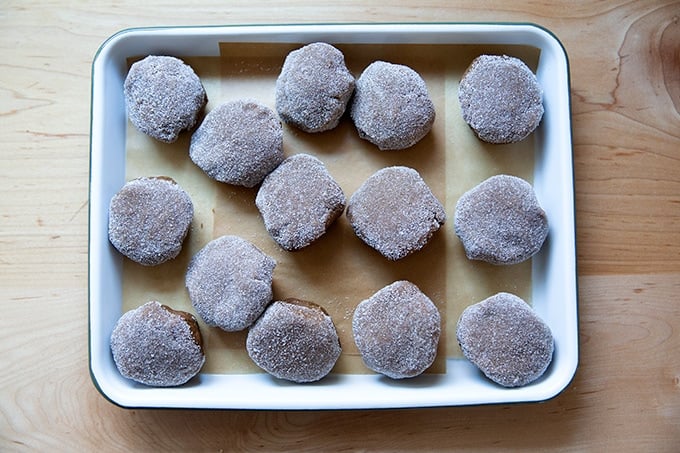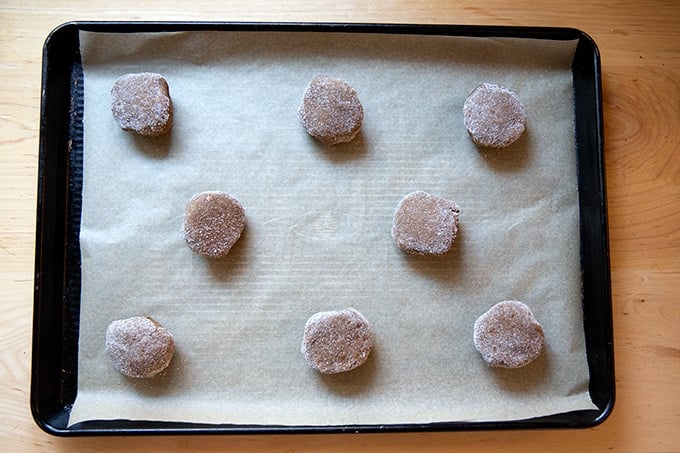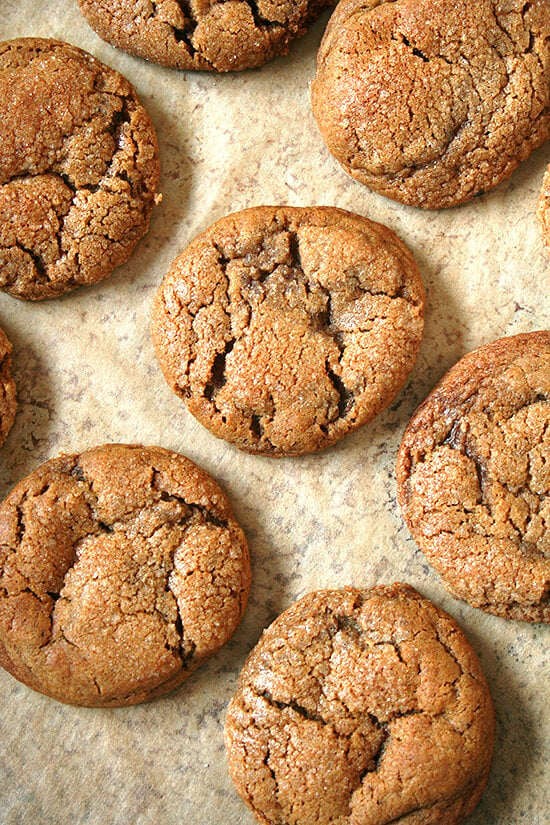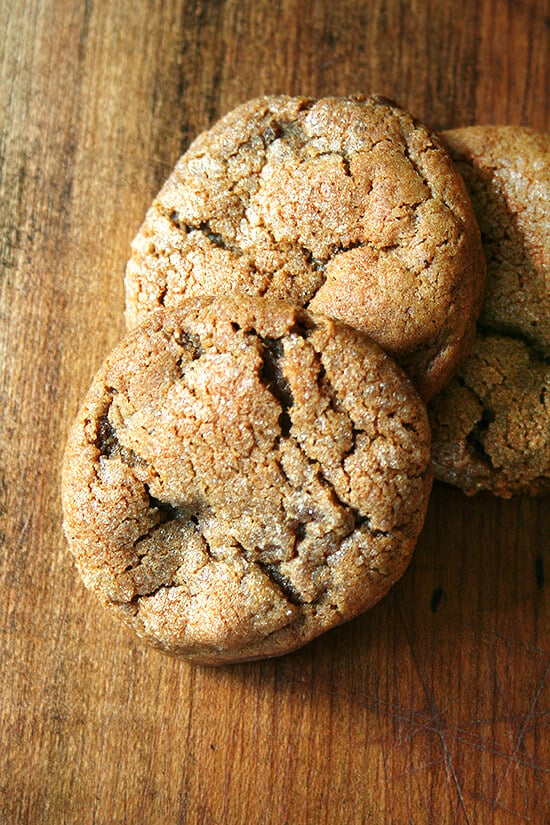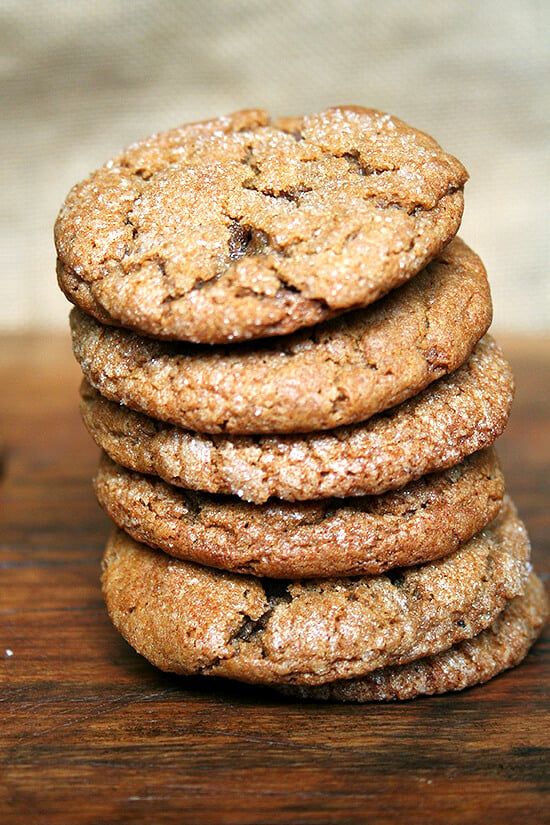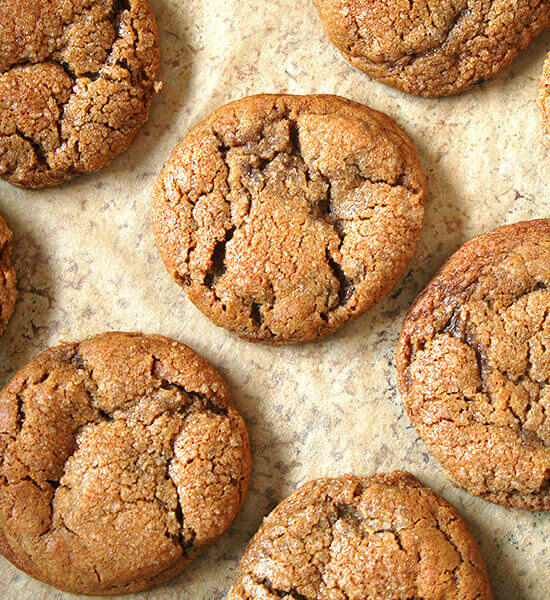My cousin Kristina makes the very best molasses cookies I have ever tasted. And they’re not just the best molasses cookies ever; they’re one of the best cookies ever. Last December when I received Kristina’s recipe in the mail and discovered that her legendary molasses cookies were made with shortening, my earth sort of shattered. How was it possible for me to really really love a shortening-based cookie? But perhaps this was an opportunity, I thought. I would substitute butter for the shortening and then blog about the nearly perfect cookie I had perfected with butter. But once again, my earth shattered. The cookies I prepared with the butter-for-shortening substitution were terrible. The texture lacked the softness and chewiness of Kristina’s, and the flavor, perhaps tarnished by over baking, was not as I had remembered. Did Kristina in fact use shortening in her cookies? I was still in disbelief. It was time for me to try shortening. Throughout the process, I wished the shortening molasses cookies to fail. But when I pulled from the oven a pan with nine perfectly golden-domed mounds crinkling up at me, I began to believe. And then, after they cooled and I took a bite, and the soft and chewy texture was just as I had remembered, and the flavor, too, was buttery and not at all artificial tasting and spiced with those wintry flavors of cinnamon and cloves, I was convinced. These were Kristina’s molasses cookies. I had to call Kristina to discuss. “So Kristina,” I said when she answered the phone, “your molasses cookies and I have been on a long journey together, and I’ve finally accepted that you do in fact use shortening, right?” “Shortening?” she replied. “No, I always use butter. I don’t know what shortening is.” I had to laugh. I couldn’t believe what I was hearing. What had gone wrong the first time I had attempted Kristina’s recipe? Was it just a terribly off day for me in the kitchen?
Butter or Shortening, Which to Use?
I have no idea what went wrong that day in the kitchen many years ago, but what I do know now is that I always use butter. I just can’t get myself to buy shortening despite my success with it in the kitchen. The key here to ensure your cookies don’t flatten into thin disks is to chill the portioned dough balls. You can chill them for as few as 3 hours, but overnight is ideal. And to ensure the cookies emerge soft and chewy, do not overbake them — the cookies will puff way up in the oven, and they might look slightly underdone at the time of removal, but they will continue to cook on the sheet pan as they cool. PS: Rum Balls: The Best, Easiest, Most Festive Cookie to Make and Gift All Season Long
How to Make Soft and Chewy Molasses Cookies, Step by Step
First, gather your ingredients: If your butter isn’t completely soft, melt 2 tablespoons of it; then mix it into the remaining butter. It works like a charm to get your butter into that super soft, mayonnaise-like texture. Add the brown sugar, molasses, and beaten egg, and stir to combine. Whisk together the dry ingredients. Then add the dry ingredients to the wet ingredients. Stir to combine. Portion the dough into 25- or 50-gram balls. I’ve been liking the 50-gram size for my cookies, but the 25-gram size is nice especially if you are gifting or making a variety of cookies for a cookie box. Roll the dough portions into balls… … then dip each ball into sugar. Chill the balls for at least 3 hours. Transfer the chilled balls to a sheet pan and bake for 8 to 11 minutes. The cookies will puff way up in the oven, but will collapse and crinkle as they fall.
5 from 11 reviews
